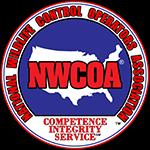Get Rid of Woodpeckers
Woodpeckers may seem like charming forest dwellers, but when they target your home or business, they become a serious problem. These birds are known for their relentless pecking on wood surfaces—often causing extensive property damage in search of food or nesting sites. While beautiful and fascinating in the wild, woodpeckers nesting on your building can lead to costly repairs, ongoing noise disturbances, and even secondary pest infestations. To safely and effectively eliminate the problem, woodpecker removal should be handled by professionals. If you’ve been searching for woodpeckers near me or need an urgent woodpecker exterminator, Ridall Pest Control is here to help with humane, effective solutions.
Get Your FREE Quote
Complete the quick form below and one of our experts will get back to you as soon as we can.
Identification of Woodpeckers
Woodpeckers are part of the Picidae bird family and can be found across the Greater Vancouver and Fraser Valley regions. These birds are easily recognized by their chisel-like beaks, stiff tail feathers, and unique habit of tapping on wood surfaces to communicate, forage for insects, or excavate nests.
There are more than 20 species of woodpeckers in North America, but a few are especially notorious for causing structural damage:
Downy Woodpecker (Picoides pubescens) – Small, black-and-white birds that often peck on siding, gutters, or wooden fences.
Hairy Woodpecker (Picoides villosus) – Slightly larger than the downy woodpecker, they frequently drum on trees and buildings.
Northern Flicker (Colaptes auratus) – A large species often found on roofs and wooden facades. They frequently hammer on chimney caps and gutters to attract mates
Pileated Woodpecker (Dryocopus pileatus) – One of the largest species in North America, known for leaving massive, rectangular holes in trees and wooden structures.
5 Interesting Facts About Woodpeckers
Even though woodpeckers can be a nuisance, they’re fascinating creatures with some pretty amazing abilities. Here are five facts you may not know:
- Their Tongue Is Longer Than Their Beak
Woodpeckers have barbed tongues that can extend up to 4 inches beyond their beak—perfect for fishing insects out of deep crevices.
- They Drum Instead of Sing
Unlike other birds, woodpeckers don’t sing. Instead, they communicate by drumming on trees, metal, or wood with rapid, rhythmic pecking.
- Their Skull Acts Like a Helmet
Woodpeckers can peck up to 20 times per second without injury thanks to specialized shock-absorbing skulls and tightly packed brain tissue.
- They Can Recognize Echoes
These birds use sound echoes to judge the hollow-ness of trees or walls, helping them identify good nesting or feeding spots—which might include your building!
- They’re Protected by Law
In Canada, most woodpeckers are protected under the Migratory Birds Convention Act, making it illegal to kill or capture them without proper permits.
Baby Season: When Do Woodpeckers Reproduce?
Woodpecker breeding season typically begins in late spring through early summer (April–July). During this time, males become highly active—drumming loudly to mark territory and attract mates. Once a pair forms, they excavate a nesting cavity in trees or building materials. Eggs hatch in about two weeks, and baby woodpeckers (nestlings) remain in the nest for 3–4 weeks before fledging.
Without prompt woodpecker removal, a nesting pair can return year after year to the same spot, causing compounded structural damage.
Habitat: Where Do Woodpeckers Nest in or on Structures?
Woodpeckers prefer quiet, elevated, wooden surfaces that mimic tree trunks. Unfortunately, many modern homes and commercial buildings offer ideal alternatives. These birds use their strong beaks to drill into materials while searching for food or nesting space.
Common Nesting & Pecking Sites:
- Wood Siding & Trim – Cedar, pine, and other softwoods are prime targets. Holes may appear along siding in vertical rows.
- Eaves & Soffits – Quiet overhangs provide ideal conditions for pecking and cavity excavation.
- Chimney Caps & Gutters – Metal objects amplify the sound of drumming, making them attractive to territorial males.
- Wooden Fascia Boards – Frequently used for both food foraging and nesting.
- Log Homes & Cabins – Natural wood exteriors are especially vulnerable to woodpecker damage.
- Under Rooflines – The area beneath shingles or flashing is often used for nesting or drumming, which can lead to water infiltration and mold.
If left unaddressed, a single bird can cause dozens of holes in a short amount of time—requiring a skilled woodpecker exterminator company like Ridall Pest Control to assess and stop the damage.
Why Choose Ridall Pest Control for Woodpecker Removal?
At Ridall Pest Control, we combine experience, compassion, and cutting-edge techniques to provide the most effective and humane woodpecker removal services in the Greater Vancouver and Fraser Valley regions. Whether you’re dealing with a single bird or an escalating infestation, we’re here to help.
What Sets Ridall Pest Control Apart?
- Expert Wildlife Specialists – Our licensed technicians are trained in woodpecker exterminator services and bird behavior, ensuring safe and legal removal. To further assure our staff are using the latest in bird technologies, our bird and wildlife technicians are also certified with the NWCOA (National Wildlife Control Operators Association), an Association that specializes in bird and wildlife control.
- Eco-Friendly & Humane – We use non-lethal methods that protect both your property and the local ecosystem.
- Fast Response Times – Immediate assistance when you need it most—no waiting, no hassle.
- Customized Solutions – We tailor treatment plans for homes, condos, commercial buildings, and heritage properties.
- Comprehensive Pest Management – We offer full-service pest control beyond birds, including rodents, insects, wildlife and more.
Identifying Infestation Signs
Unlike other pests that may be more discreet, woodpecker activity is often loud and visible. However, understanding the specific signs can help determine when it’s time to call a woodpecker removal company for assistance. Indications of woodpecker activity at your home or business include:
- Persistent Drumming or Pecking Sounds
Early in the morning or throughout the day, you might hear rhythmic knocking or drilling on wood, gutters, or metal vents. This is a clear indication that a woodpecker is claiming territory or searching for food.
- Visible Holes in Wood
Woodpeckers leave distinctive round or rectangular holes in wooden surfaces:
- Small, shallow holes suggest foraging activity.
- Larger, deeper cavities indicate nesting sites.
If you find repeated holes along your siding, fascia, or eaves, it’s time to consult a woodpecker exterminator before more damage occurs. Ridall Pest Control’s woodpecker exterminator services are designed to locate the source of the problem and implement humane, long-lasting solutions.
- Nesting Debris or Bird Droppings
Woodpeckers may leave small piles of wood chips beneath holes they’ve created. You may also see droppings near nesting sites under eaves or along the base of exterior walls.
- Disturbed Insulation or Wiring
In some cases, woodpeckers peck through siding and reach into wall cavities, disturbing insulation or even damaging wiring—creating fire hazards.
- Increased Insect Activity
Woodpeckers often target infested or rotting wood. Their presence may indicate insects such as carpenter ants or wood-boring beetles within your place. A thorough inspection by a woodpecker removal company like Ridall Pest Control can help identify the root cause and stop the issue at its source.
Don’t Let a Woodpecker Turn Your Place Into Their Nesting Ground!
If you’ve noticed holes in your siding or persistent drumming, contact a trusted woodpecker exterminator company like Ridall Pest Control. We offer safe, humane, and effective woodpecker removal services tailored to your property.
Feeding Habits of Woodpeckers
Woodpeckers are omnivorous birds, meaning they eat a wide variety of food sources depending on availability. While their diet supports the ecosystem, their feeding behaviors can cause serious property damage when they forage for insects within building structures.
What Do Woodpeckers Eat?
Woodpeckers primarily feed on:
- Insects and larvae – Their strong beaks and long tongues allow them to extract beetle larvae, ants, and other wood-boring insects from tree bark and wood siding.
- Fruits and berries – Many species supplement their diet with seasonal fruits, nuts, and seeds.
- Tree sap – Sapsuckers drill neat rows of holes into tree trunks to feed on sap and the insects it attracts.
Unfortunately, when they search for food in homes or buildings, woodpeckers often mistake wood siding, fascia boards, or even stucco for natural tree bark.
Potential Dangers of Woodpeckers
While woodpeckers may appear harmless, their behavior can lead to serious structural damage and disturbances to homeowners and businesses.
Property Damage from Woodpeckers
Woodpeckers peck and drill holes for several reasons—feeding, drumming, and nesting. Over time, these behaviors can weaken building materials and create vulnerabilities in your structure. Common damage includes:
- Holes in siding or wood trim – Repeated pecking can destroy cedar siding, soffits, eaves, and window frames.
- Gutter and vent damage – Woodpeckers often perch and drum on metal vents and gutters, creating loud disturbances and damaging infrastructure.
- Water infiltration – Holes left behind can lead to moisture seeping into the walls, which may result in rot, mold, and pest infestations.
- Damage to insulation and wiring – Nesting activity can result in compromised insulation or exposed wires, posing fire hazards.
Health Risks & Disturbances
- Noise pollution – Woodpecker drumming is extremely loud, particularly during mating season when territorial males peck rhythmically on metal or wood surfaces.
- Bird droppings – Accumulated droppings can carry fungal spores such as Histoplasma, which may cause respiratory illness in humans.
- Secondary pest issues – Holes created by woodpeckers may invite insects, rodents, or other birds into your building.
If you’re dealing with this type of destruction, contact a woodpecker exterminator company or woodpecker removal company before the damage escalates.
Woodpecker Removal Process
Because woodpeckers are protected under the federal Migratory Birds Convention Act and the provincial Wildlife Act, removal must be humane, strategic, and legally compliant. That’s why our woodpecker exterminator services are tailored to meet both legal standards and your specific property needs.
- Comprehensive Inspection
We begin with a full assessment of your property to locate active nesting or feeding sites, identify species, and determine the severity of the infestation.
- Exclusion & Deterrents
Our specialists use industry-approved exclusion methods that discourage woodpeckers without harming them:
- Bird netting or screens – Block access to vulnerable areas like eaves and soffits.
- Visual deterrents – Installing reflective devices, predator decoys, and scare tape discourage return visits.
- Physical barriers – Installation of metal flashing or wood panel covers prevents future drilling.
- Habitat Modification
To prevent recurrence, we address the root causes:
- Pest control – Eliminating wood-boring insects removes a key food source.
- Repairs – Damaged wood, fascia, and siding are repaired or reinforced to withstand future activity.
- Woodpecker birdhouse – We would install a woodpecker birdhouse near your home or business for the woodpeckers to relocate to.
- Long-Term Monitoring
Our woodpecker exterminator services include ongoing inspection and maintenance plans to ensure woodpeckers don’t return to your property.
Ready to Protect Your Place from Woodpecker Damage?
Don’t let a small problem turn into major repairs. Whether you hear loud drumming at dawn or notice holes in your siding, the experts at Ridall Pest Control are here to help.
Effective. Humane. Guaranteed.
Our bird and wildlife technicians at Ridall Pest Control specialize in woodpecker removal in Greater Vancouver and the Fraser Valley, helping homeowners and businesses dealing with woodpeckers near me using fast, customized solutions that work.
📞 Call Now: 604-580-2847
📧 Email: info@ridallpestcontrol.ca
Ridall Pest Control – Your #1 Trusted Woodpecker Removal Company and Woodpecker Exterminator Company Near You
FAQ
Why is a woodpecker pecking on my house?
Woodpeckers drum on homes to search for insects, create nesting sites, or communicate during mating season. They’re often attracted to cedar siding and areas where insects may be hiding in the walls.
Will a woodpecker go away on its own?
Possibly, but if your property provides food or nesting material, they’re likely to return or stick around. Without proper deterrents or exclusion methods, the problem usually gets worse over time.
Is it legal to remove a woodpecker myself
No—woodpeckers are protected under the Migratory Birds Convention Act. DIY removal can result in legal penalties. Only trained professionals with knowledge of bird and wildlife laws, like the professionals at Ridall Pest Control, should handle removal.
Can a woodpecker cause real damage to my home?
Absolutely. Repeated pecking can puncture siding, damage insulation, lead to water leaks, and create entry points for other pests.
How does Ridall Pest Control humanely remove woodpeckers?
We use non-lethal methods like exclusion barriers, deterrents (visual, and physical) to make your property less attractive—all while staying within legal guidelines.




